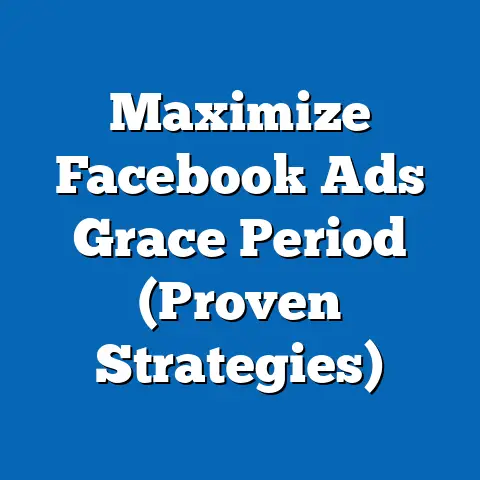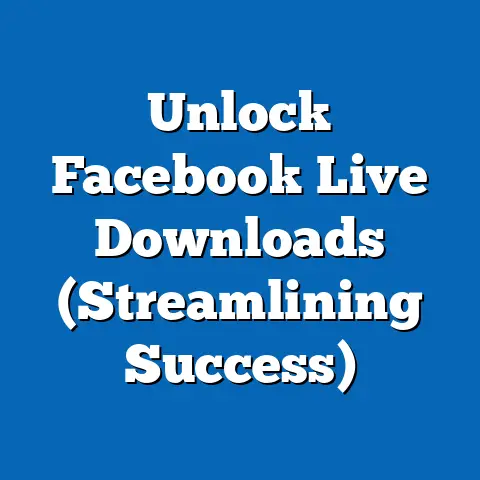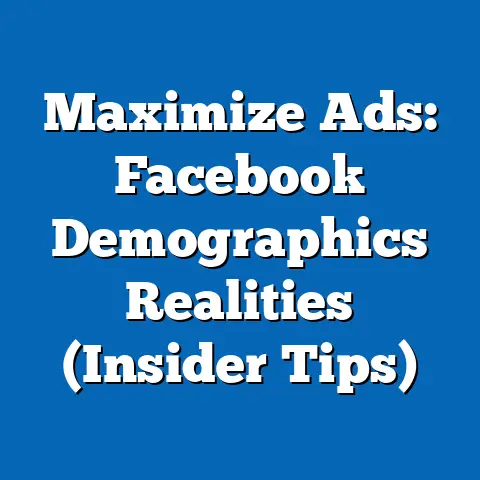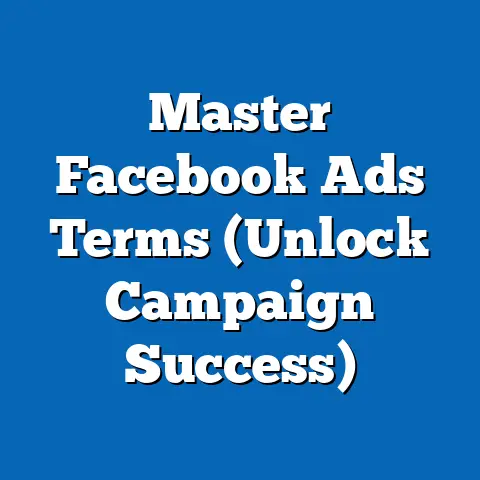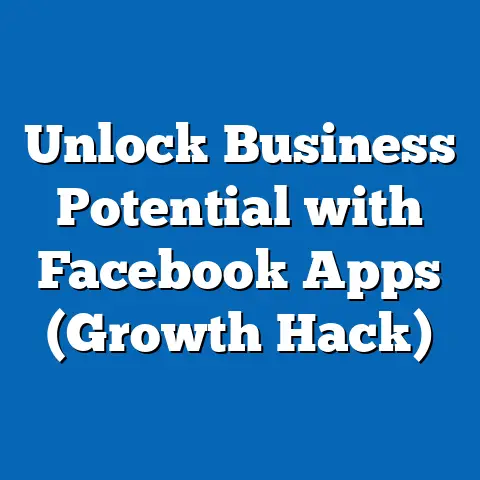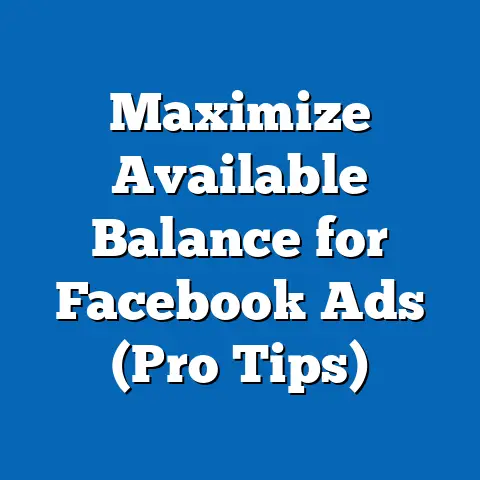Boost Revenue with Automatic Payments (Smart fb ad Strategies)
In today’s fiercely competitive business environment, every penny counts. As business owners and marketers, we’re constantly searching for ways to maximize our return on investment (ROI) and ensure that our hard-earned dollars are working as efficiently as possible. One often-overlooked area that can significantly impact your bottom line is how you receive payments from your customers. Automatic payments offer a compelling solution that can not only streamline your business operations but also enhance customer satisfaction and, ultimately, boost your revenue.
Think about it: convenience and reliability are highly valued by today’s consumers. Automatic payments deliver both in spades. By offering your customers the option to set up recurring billing, subscriptions, or other forms of automated payment, you’re providing them with a seamless and hassle-free experience. This, in turn, fosters loyalty and reduces churn, leading to a more predictable and sustainable revenue stream.
But how do you effectively communicate the value of automatic payments to your target audience? That’s where Facebook ads come into play. As one of the most powerful advertising platforms in the world, Facebook offers unparalleled reach and targeting capabilities, allowing you to connect with potential customers who are most likely to benefit from your automatic payment solutions.
Get ready to unlock the power of automatic payments and Facebook ads – it’s time to take your revenue to the next level!
Section 1: Understanding Automatic Payments
Before we dive into the specifics of Facebook advertising, let’s take a step back and make sure we’re all on the same page about what automatic payments are and why they matter.
Defining Automatic Payments
Automatic payments, at their core, are pre-authorized transactions that occur regularly, typically on a predetermined schedule. This eliminates the need for customers to manually initiate payments each time a bill is due. Think of it as setting up a “set it and forget it” system for paying for goods and services.
There are several different types of automatic payments, including:
- Recurring Billing: This is perhaps the most common type, where customers are billed a fixed amount at regular intervals (e.g., monthly, quarterly, annually) for ongoing services like software subscriptions, gym memberships, or online courses.
- Subscriptions: Similar to recurring billing, subscriptions involve a recurring payment for access to content, products, or services. The key difference is often the perceived value exchange; subscriptions are typically associated with access to something exclusive or ongoing.
- Installment Payments: This allows customers to pay for larger purchases over time in smaller, more manageable installments. This is a great option for high-ticket items like furniture, electronics, or even educational programs.
- Pre-Authorized Debits: Customers authorize a company to debit their bank account directly for payments. This is commonly used for utility bills, insurance premiums, and loan payments.
The Advantages of Automatic Payments
The benefits of implementing automatic payment systems are significant for both businesses and consumers:
For Businesses:
- Improved Cash Flow: Predictable recurring payments lead to more stable and reliable cash flow, making it easier to manage finances and plan for future growth. I’ve personally seen businesses transform their financial forecasting accuracy simply by implementing automated billing.
- Reduced Administrative Costs: Automating the payment process reduces the need for manual invoicing, payment reminders, and collections efforts, saving time and resources. Think about the hours your team spends chasing down late payments – that time could be better spent on more strategic initiatives.
- Enhanced Customer Retention: Automatic payments make it easier for customers to stay subscribed or enrolled in services, reducing churn and increasing customer lifetime value. A seamless payment experience contributes significantly to customer loyalty.
- Increased Revenue: By making it easier for customers to pay, businesses can see an increase in overall revenue. Installment plans, for example, can make higher-priced items more accessible, leading to more sales.
- Reduced Late Payments: Automated reminders and payment processing minimize the risk of late or missed payments.
For Consumers:
- Convenience: Customers don’t have to remember to pay bills manually, saving time and effort.
- Reduced Stress: Automatic payments eliminate the worry of forgetting a payment and incurring late fees or service interruptions.
- Improved Budgeting: Knowing exactly when payments will be debited allows customers to budget more effectively.
- Access to Installment Plans: Automatic payments make it possible to break down large purchases into smaller, more manageable installments.
- Continued Access to Services: Customers can enjoy uninterrupted access to their favorite subscriptions and services.
Statistics and Case Studies
The impact of automatic payments on revenue growth is well-documented. Consider these statistics:
- A study by McKinsey found that companies offering subscription services with automatic renewals experienced 25% higher revenue growth than those without.
- According to a report by PYMNTS.com, businesses that offer automatic payments see a 30% reduction in customer churn.
- Research from Statista shows that the global subscription market is expected to reach \$402.6 billion by 2025, driven in large part by the convenience of automatic payments.
I remember working with a small online education company that was struggling with inconsistent revenue. They relied on manual invoicing and payment reminders, which was time-consuming and often resulted in delayed payments. After implementing an automatic payment system for their online courses, they saw a 35% increase in revenue within the first quarter. This was due to a combination of reduced churn, improved cash flow, and increased enrollment rates.
Key Takeaway: Automatic payments offer significant advantages for both businesses and consumers, leading to improved cash flow, reduced administrative costs, enhanced customer retention, and increased revenue.
Next Step: Evaluate your current payment processes and identify opportunities to implement automatic payment options.
Section 2: The Role of Facebook Ads in Promoting Automatic Payments
Now that we understand the value of automatic payments, let’s explore how Facebook ads can be used to effectively promote these options to your target audience.
Why Facebook?
Facebook, with its billions of active users, is a powerhouse advertising platform for businesses of all sizes. Here’s why it’s particularly well-suited for promoting automatic payments:
- Massive Reach: Facebook boasts over 2.9 billion monthly active users, providing an unparalleled opportunity to reach a vast audience.
- Granular Targeting: Facebook’s advanced targeting capabilities allow you to pinpoint specific demographics, interests, behaviors, and even life events. This means you can target individuals who are most likely to be interested in your automatic payment solutions.
- High Engagement: Facebook users are highly engaged, spending an average of 34 minutes per day on the platform. This provides ample opportunities to capture their attention with compelling ads.
- Diverse Ad Formats: Facebook offers a variety of ad formats, including image ads, video ads, carousel ads, and collection ads, allowing you to showcase your automatic payment options in the most engaging way possible.
- Cost-Effectiveness: Compared to other advertising channels, Facebook ads can be relatively cost-effective, especially when you leverage its targeting capabilities to reach the right audience.
Facebook Targeting Capabilities
Facebook’s targeting options are truly remarkable. You can target users based on:
- Demographics: Age, gender, location, education, income, relationship status, etc.
- Interests: Hobbies, passions, pages they’ve liked, groups they’ve joined, etc.
- Behaviors: Purchase history, online activity, device usage, travel habits, etc.
- Custom Audiences: Upload your existing customer list to target individuals who have already interacted with your business.
- Lookalike Audiences: Create audiences that are similar to your existing customers, expanding your reach to new potential customers.
- Life Events: Target users who are experiencing major life events, such as getting married, moving to a new home, or starting a new job.
For example, if you’re a subscription-based service targeting young professionals, you could target users aged 25-35 who are interested in topics like “personal development,” “career growth,” and “productivity.” You could also create a lookalike audience based on your existing subscriber base to reach new potential customers who share similar characteristics.
Successful Facebook Ad Campaigns: Examples
Let’s take a look at some examples of successful Facebook ad campaigns that promoted automatic payments effectively:
- Netflix: Netflix consistently uses Facebook ads to promote its subscription service, highlighting the convenience of automatic billing and the vast library of content available. Their ads often feature eye-catching visuals of popular shows and movies, along with clear calls-to-action like “Start Your Free Trial.”
- Spotify: Spotify leverages Facebook ads to target music lovers, showcasing the benefits of their premium subscription, which includes ad-free listening and offline downloads. Their ads often feature personalized playlists and recommendations, making the offer more appealing.
- Dollar Shave Club: Dollar Shave Club built its entire business on the concept of automatic deliveries of shaving products. Their Facebook ads are known for their humorous and irreverent tone, highlighting the convenience and affordability of their subscription service.
- Local Gyms: I’ve seen local gyms successfully use Facebook ads to promote their membership options, including automatic monthly billing. They often target users who are interested in fitness, health, and wellness, highlighting the benefits of regular exercise and the convenience of automatic payments.
These campaigns share several common elements:
- Clear Value Proposition: They clearly communicate the benefits of automatic payments, such as convenience, affordability, and access to exclusive content or services.
- Compelling Visuals: They use eye-catching visuals that capture attention and convey the brand’s personality.
- Strong Call-to-Action: They include clear and concise calls-to-action that encourage users to take the next step, such as “Sign Up Now,” “Start Your Free Trial,” or “Learn More.”
- Targeted Messaging: They tailor their messaging to the specific interests and needs of their target audience.
Key Takeaway: Facebook is a powerful platform for advertising automatic payment options due to its massive reach, granular targeting capabilities, high engagement, diverse ad formats, and cost-effectiveness.
Next Step: Brainstorm how you can leverage Facebook’s targeting options to reach your ideal customers and craft compelling ads that highlight the benefits of automatic payments.
Section 3: Crafting Compelling Facebook Ads for Automatic Payments
Creating a successful Facebook ad campaign that promotes automatic payments requires more than just setting up a basic ad and hoping for the best. You need to craft compelling ads that capture attention, communicate value, and drive conversions.
Key Components of a Successful Facebook Ad
Here are the key components of a successful Facebook ad:
- Attention-Grabbing Visual: Your visual is the first thing people will see, so it needs to be eye-catching and relevant to your offer. Use high-quality images or videos that showcase the benefits of automatic payments or the products/services they support.
- Persuasive Copy: Your ad copy should be concise, clear, and compelling. Highlight the key benefits of automatic payments, such as convenience, affordability, and peace of mind. Use strong verbs and emotional language to connect with your audience.
- Strong Call-to-Action (CTA): Your CTA should be clear, concise, and action-oriented. Tell people exactly what you want them to do, such as “Sign Up Now,” “Start Your Free Trial,” or “Learn More.”
- Relevance: Ensure that your ad is relevant to your target audience. Use Facebook’s targeting options to reach people who are most likely to be interested in your offer.
- Mobile-Friendliness: With the majority of Facebook users accessing the platform on mobile devices, it’s crucial to ensure that your ads are optimized for mobile viewing.
Highlighting Value for Money
When promoting automatic payments, it’s essential to highlight the value for money aspect. Explain how automatic payments can save customers time, money, and hassle. Here are some tips:
- Focus on Convenience: Emphasize the convenience of automatic payments, highlighting how they eliminate the need to remember to pay bills manually.
- Highlight Savings: If automatic payments offer a discount or other incentive, be sure to highlight this in your ad copy.
- Emphasize Peace of Mind: Explain how automatic payments can provide peace of mind by ensuring that bills are always paid on time, avoiding late fees or service interruptions.
- Use Social Proof: Include testimonials or reviews from satisfied customers who have benefited from automatic payments.
- Offer a Guarantee: If possible, offer a satisfaction guarantee to reassure customers that they can cancel automatic payments at any time if they’re not satisfied.
Examples of Effective Ad Copy
Here are some examples of ad copy that effectively communicates the benefits of automatic payments:
- “Never miss a payment again! Sign up for automatic payments and enjoy hassle-free billing.” (Focuses on convenience)
- “Save 10% on your monthly subscription when you enroll in automatic payments. It’s the easiest way to stay connected!” (Highlights savings)
- “Get peace of mind knowing your bills are always paid on time. Enroll in automatic payments today!” (Emphasizes peace of mind)
- “Our customers love the convenience of automatic payments! ‘I never have to worry about forgetting to pay my bill,’ says Sarah J.” (Uses social proof)
- “Try automatic payments risk-free! Cancel anytime, no questions asked.” (Offers a guarantee)
Emotional vs. Logical Appeals:
When crafting your ad copy, consider using both emotional and logical appeals. Emotional appeals connect with your audience on a personal level, while logical appeals provide factual information and reasoning.
For example, you could use an emotional appeal by highlighting the stress and anxiety of managing multiple bills each month, and then offer automatic payments as a solution to alleviate that stress. Alternatively, you could use a logical appeal by presenting statistics that show how automatic payments can save customers money on late fees and interest charges.
I once ran a campaign for a local utility company that focused on the emotional appeal of avoiding service interruptions. The ad featured a family enjoying a cozy evening at home, with the tagline “Don’t let a forgotten bill ruin your family time. Sign up for automatic payments.” This ad resonated strongly with the target audience and resulted in a significant increase in enrollment rates.
Key Takeaway: Crafting compelling Facebook ads for automatic payments requires attention-grabbing visuals, persuasive copy, a strong call-to-action, relevance, and mobile-friendliness. Highlight the value for money aspect by focusing on convenience, savings, peace of mind, social proof, and guarantees.
Next Step: Experiment with different ad creatives and copy variations to determine what resonates best with your target audience.
Section 4: Smart Targeting Strategies for Facebook Ads
Even the most compelling ad will fall flat if it’s not shown to the right people. That’s why smart targeting is crucial for the success of your Facebook ad campaigns.
Targeting Options: A Deeper Dive
Let’s take a closer look at some of the most effective targeting options available on Facebook:
- Lookalike Audiences: As mentioned earlier, lookalike audiences allow you to reach new potential customers who share similar characteristics to your existing customers. This is a powerful way to expand your reach and target individuals who are most likely to be interested in your offer. To create a lookalike audience, you’ll need to provide Facebook with a source audience, such as your existing customer list, website visitors, or page fans. Facebook will then analyze the characteristics of this source audience and identify other users who share similar traits.
- Custom Audiences: Custom audiences allow you to target individuals who have already interacted with your business, such as website visitors, email subscribers, or app users. This is a great way to re-engage with people who are already familiar with your brand and encourage them to take the next step. You can create custom audiences by uploading your customer list, connecting your website to Facebook Pixel, or integrating your app with Facebook SDK.
- Behavioral Targeting: Behavioral targeting allows you to target users based on their online activity, purchase history, device usage, travel habits, and other behaviors. This is a powerful way to reach people who have demonstrated an interest in your products or services. For example, you could target users who have recently purchased a subscription to a competitor’s service or who have visited websites related to your industry.
- Interest-Based Targeting: Interest-based targeting allows you to target users based on their declared interests, hobbies, and passions. This is a great way to reach people who are passionate about a particular topic or activity. For example, you could target users who are interested in “personal finance,” “budgeting,” or “saving money.”
- Demographic Targeting: Demographic targeting allows you to target users based on their age, gender, location, education, income, relationship status, and other demographic characteristics. This is a useful way to narrow your audience and ensure that your ads are reaching the right people. For example, you could target users aged 25-35 who are employed and have a college degree.
Segmenting Audiences for Maximum Impact
To maximize the impact of your Facebook ad campaigns, it’s important to segment your audiences based on their specific needs and interests. Here are some examples of how you can segment your audiences:
- Existing Customers vs. New Prospects: Target existing customers with ads that promote the benefits of upgrading to automatic payments, while targeting new prospects with ads that introduce your products or services and highlight the convenience of automatic billing.
- High-Value Customers vs. Low-Value Customers: Target high-value customers with exclusive offers and incentives to encourage them to enroll in automatic payments, while targeting low-value customers with ads that focus on the basic benefits of automatic billing.
- Website Visitors vs. Non-Website Visitors: Target website visitors with retargeting ads that remind them of your products or services and encourage them to sign up for automatic payments, while targeting non-website visitors with ads that introduce your brand and highlight the benefits of automatic billing.
- Mobile Users vs. Desktop Users: Tailor your ad creatives and messaging to the specific device being used. For example, you could use shorter ad copy and larger visuals for mobile users, while using longer ad copy and more detailed visuals for desktop users.
A/B Testing Targeting and Messaging
A/B testing is a crucial part of optimizing your Facebook ad campaigns. It involves testing different ad variations to determine which targeting and messaging approaches are most effective. Here are some examples of A/B tests you can run:
- Test different targeting options: Compare the performance of lookalike audiences, custom audiences, behavioral targeting, and interest-based targeting.
- Test different ad creatives: Compare the performance of different images, videos, and headlines.
- Test different ad copy variations: Compare the performance of different ad copy lengths, tones, and calls-to-action.
- Test different landing pages: Compare the performance of different landing pages that highlight the benefits of automatic payments.
To run an A/B test, you’ll need to create two or more ad variations that differ in one specific element. For example, you could create two ads that have the same ad copy and visuals but target different audiences. You’ll then need to run the ads for a set period of time and track the performance of each variation. The ad variation that performs best is the winner.
Key Takeaway: Smart targeting is crucial for the success of your Facebook ad campaigns. Segment your audiences based on their specific needs and interests, and use A/B testing to determine the most effective targeting and messaging approaches.
Next Step: Create different audience segments and run A/B tests to optimize your targeting and messaging strategies.
Section 5: Measuring Success and Optimizing Campaigns
Once you’ve launched your Facebook ad campaigns, it’s essential to track your performance and make adjustments as needed. This involves monitoring key performance indicators (KPIs) and using data insights to optimize your campaigns for maximum ROI.
Key Performance Indicators (KPIs)
Here are some of the most important KPIs to track for Facebook ad campaigns promoting automatic payments:
- Click-Through Rate (CTR): This measures the percentage of people who click on your ad after seeing it. A high CTR indicates that your ad is relevant and engaging.
- Conversion Rate: This measures the percentage of people who take the desired action after clicking on your ad, such as signing up for automatic payments or making a purchase. A high conversion rate indicates that your landing page is effective and your offer is compelling.
- Cost Per Acquisition (CPA): This measures the average cost of acquiring a new customer through your Facebook ad campaigns. A low CPA indicates that your campaigns are cost-effective.
- Return on Ad Spend (ROAS): This measures the revenue generated for every dollar spent on your Facebook ad campaigns. A high ROAS indicates that your campaigns are profitable.
- Customer Lifetime Value (CLTV): This measures the total revenue you expect to generate from a customer over the course of their relationship with your business. This is an important metric to consider when evaluating the long-term ROI of your Facebook ad campaigns.
Using Facebook Ads Manager
Facebook Ads Manager is a powerful tool that allows you to monitor your campaign performance, track your KPIs, and make adjustments as needed. Here are some of the key features of Facebook Ads Manager:
- Campaign Dashboard: This provides an overview of your campaign performance, including key metrics such as reach, impressions, clicks, conversions, and cost.
- Ad Set Level Reporting: This allows you to drill down into the performance of individual ad sets, providing insights into which targeting options are most effective.
- Ad Level Reporting: This allows you to drill down into the performance of individual ads, providing insights into which ad creatives and copy variations are most engaging.
- A/B Testing Tools: This allows you to easily run A/B tests to compare the performance of different ad variations.
- Automated Rules: This allows you to set up automated rules that automatically adjust your campaigns based on predefined criteria. For example, you could set up a rule that automatically increases your budget if your CPA is below a certain threshold.
Optimizing Campaigns Based on Data Insights
Based on the data you collect from Facebook Ads Manager, you can make adjustments to your campaigns to improve their performance. Here are some examples of how you can optimize your campaigns:
- Adjust Targeting: If you’re finding that certain targeting options are not performing well, try adjusting your targeting to reach a more relevant audience.
- Refine Ad Creatives: If your ad creatives are not generating a high CTR, try experimenting with different images, videos, and headlines.
- Improve Ad Copy: If your ad copy is not driving conversions, try experimenting with different ad copy lengths, tones, and calls-to-action.
- Optimize Landing Pages: If your landing pages are not converting well, try optimizing them to improve the user experience and make it easier for people to sign up for automatic payments.
- Adjust Budget Allocation: If certain ad sets are performing better than others, try allocating more of your budget to those ad sets.
I remember working with a client who was running a Facebook ad campaign to promote their subscription-based service. They were seeing a decent CTR, but their conversion rate was low. After analyzing their data, we discovered that their landing page was not effectively communicating the benefits of automatic payments. We made some changes to their landing page, highlighting the convenience and savings of automatic billing, and saw a significant increase in their conversion rate.
Key Takeaway: Measuring success and optimizing campaigns is essential for maximizing the ROI of your Facebook ad campaigns. Track your KPIs, use Facebook Ads Manager to monitor your performance, and make adjustments as needed based on data insights.
Next Step: Set up a system for tracking your KPIs and regularly review your campaign performance.
Section 6: Real-Life Success Stories
Let’s take a look at some real-life examples of businesses that have successfully implemented Facebook ad strategies to promote automatic payments.
- Subscription Box Company: A subscription box company that offers monthly deliveries of curated products used Facebook ads to target potential subscribers. They created ads that showcased the contents of their boxes and highlighted the convenience of automatic deliveries. They also offered a discount for new subscribers who signed up for automatic payments. As a result, they saw a 30% increase in new subscribers and a significant boost in revenue.
- Online Learning Platform: An online learning platform used Facebook ads to promote their subscription-based courses. They targeted users who were interested in personal development and career growth. Their ads highlighted the convenience of accessing courses anytime, anywhere, and the affordability of their monthly subscription. They also offered a free trial for new subscribers who signed up for automatic payments. As a result, they saw a 25% increase in new subscribers and a significant reduction in churn.
- Local Restaurant: A local restaurant used Facebook ads to promote their loyalty program, which offered exclusive discounts and rewards to customers who signed up for automatic monthly billing. They targeted users who were interested in dining out and local restaurants. Their ads highlighted the savings and convenience of their loyalty program. As a result, they saw a 20% increase in loyalty program members and a significant increase in repeat business.
These success stories share several common elements:
- Clear Value Proposition: They clearly communicated the benefits of automatic payments to their target audience.
- Targeted Messaging: They tailored their messaging to the specific needs and interests of their target audience.
- Compelling Offers: They offered incentives, such as discounts or free trials, to encourage people to sign up for automatic payments.
- Consistent Tracking and Optimization: They consistently tracked their campaign performance and made adjustments as needed.
Lessons Learned:
From these examples, we can learn the following lessons:
- Clearly define your target audience: Understand their needs, interests, and pain points.
- Craft compelling messaging: Highlight the benefits of automatic payments in a way that resonates with your target audience.
- Offer incentives: Use discounts, free trials, or other incentives to encourage people to sign up for automatic payments.
- Track your performance and optimize your campaigns: Regularly monitor your KPIs and make adjustments as needed.
Key Takeaway: Real-life success stories demonstrate that Facebook ad strategies can be highly effective for promoting automatic payments. By following the lessons learned from these examples, you can increase your chances of success.
Next Step: Analyze these success stories and identify strategies that you can apply to your own Facebook ad campaigns.
Automatic payments offer significant advantages for both businesses and consumers, leading to improved cash flow, reduced administrative costs, enhanced customer retention, and increased revenue. By leveraging Facebook’s massive reach, granular targeting capabilities, high engagement, diverse ad formats, and cost-effectiveness, you can connect with potential customers who are most likely to benefit from your automatic payment solutions.
Remember to craft compelling Facebook ads that capture attention, communicate value, and drive conversions. Highlight the value for money aspect by focusing on convenience, savings, peace of mind, social proof, and guarantees. Smart targeting is crucial for the success of your Facebook ad campaigns. Segment your audiences based on their specific needs and interests, and use A/B testing to determine the most effective targeting and messaging approaches.
Measuring success and optimizing campaigns is essential for maximizing the ROI of your Facebook ad campaigns. Track your KPIs, use Facebook Ads Manager to monitor your performance, and make adjustments as needed based on data insights. Real-life success stories demonstrate that Facebook ad strategies can be highly effective for promoting automatic payments. By following the lessons learned from these examples, you can increase your chances of success.
Now, it’s time to take action! Consider integrating automatic payment options into your business model and use Facebook ads as a tool for promotion.
Call to Action:
Start your journey towards enhanced revenue and customer satisfaction today! Take the first step by evaluating your current payment processes and identifying opportunities to implement automatic payment options. Then, leverage the power of Facebook ads to reach your target audience and promote the benefits of automatic billing.
Don’t wait – the future of your business is in your hands!

